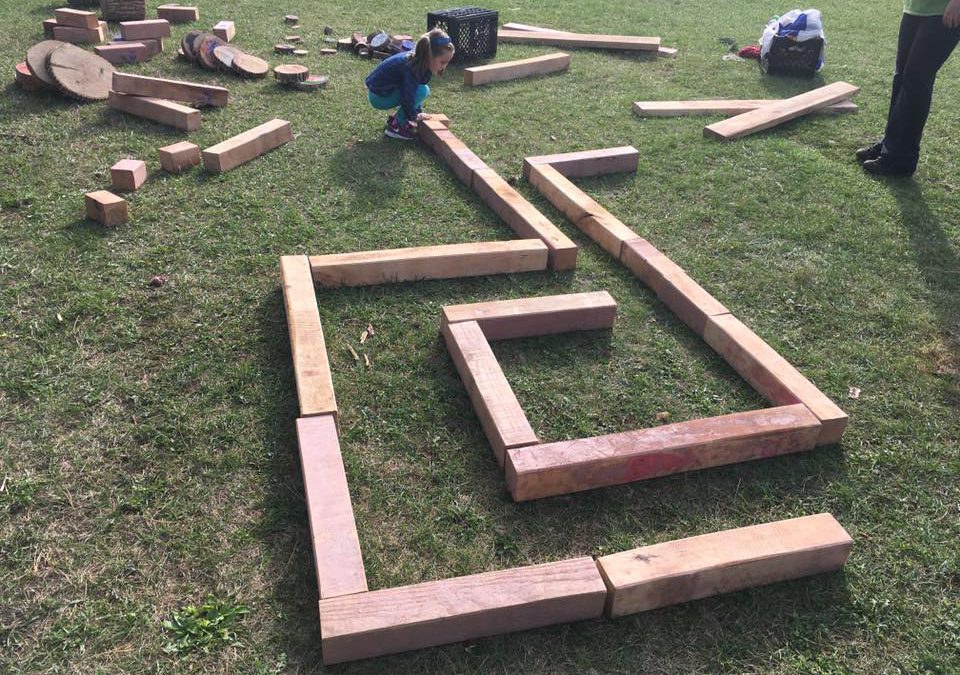
Keep up with our latest news and projects!

Places that allow children to shape their everyday environments and connect to the natural world are critically absent in Ontario’s urban areas. Community greening projects can create an opportunity for children to actively participate in changing the urban landscape.
Children have a strong desire to interact with and shape their environments. In an effort to have their voices heard in the making of great public places, Evergreen invited children to become city builders and participate in an initiative called Neighbourhood Nature Play. This initiative is significantly changing the landscape of play in the City of Kitchener, Ontario, Canada. The following case study provides a glimpse into some of the key factors and conditions that allow for a child-centred approach to neighbourhood placemaking.
Prior to the launch of Neighbourhood Nature Play, Evergreen had established trusted relationships with the following key stakeholders
– the City of Kitchener, the Waterloo Region District School Board, and
the Lyle. S. Hallman Family Foundation (an esteemed local philanthropic organisation). Over a 4-year period, we worked with communities to steward parklands and transform barren school grounds into vibrant places for play and learning.
In 2016 Evergreen, along with the aforementioned partners, launched the Neighbourhood Nature Play Initiative – a two-year program that is transforming two underserved parks – Gzowski Park and Kingsdale Park – into flourishing community hubs and nature-rich play environments for children. The goals of the project are aligned with the City’s new Neigbourhood Strategy “Love My Hood”. This strategy implements the overarching themes of great places, connected people and working together. The success of the project is built on strategic partnerships in the community and alignment with existing City initiatives. In recognition of this approach to collaborative city building, the project just recently received 150K from the Ontario Trillium Foundation, a large provincial funder whose support will help to expand the Neighbourhood Nature Play model and build capacity for programming in additional park sites in the City of Kitchener.
Children as Experts
Evergreen uses animation and co-design methods to plan, program, design, implement, and steward child-centred nature-play environments. A significant component to the Neighbourhood Nature Play Initiative centred on engaging the community through interventions in the parks. These interventions included family events, festivals, and regularly scheduled nature programs. During such interventions, Evergreen worked closely with community centre staff, youth groups, and neighbourhood associations to ensure that the children’s voices were amplified and their ideas included in the park planning and transformation process. A key strategy to engage children in the ideation of the park spaces was to provide regular programming in the parks hosted by Evergreen Play Animators. This opportunity for ‘free play’ in a safe place in the community provided the necessary contact with children to ignite the co-design process.
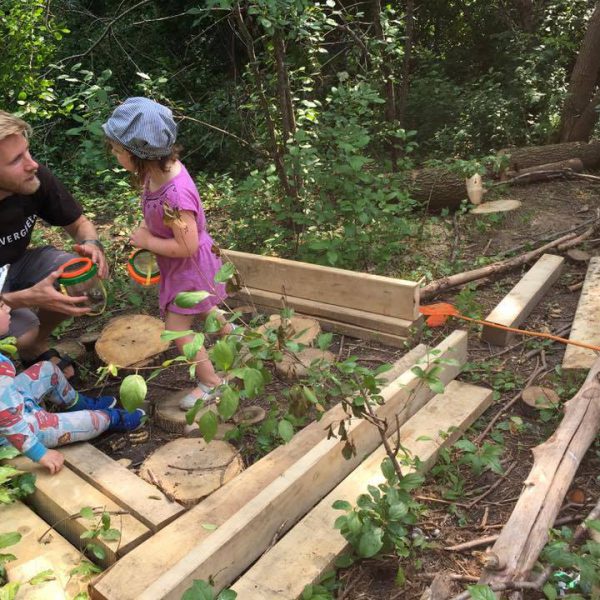
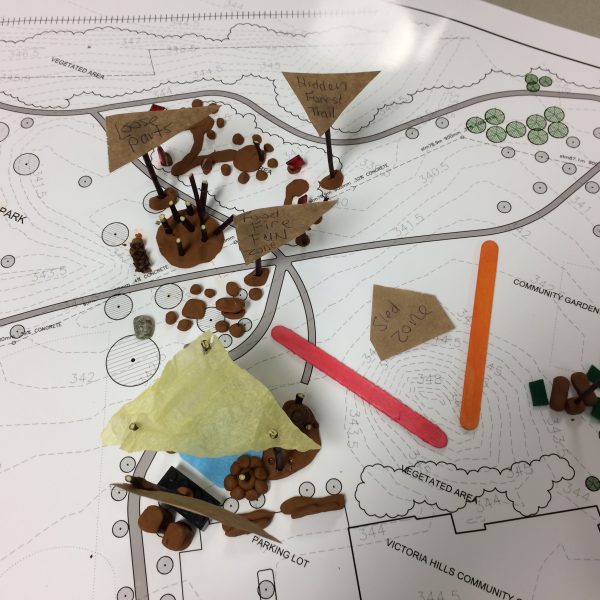
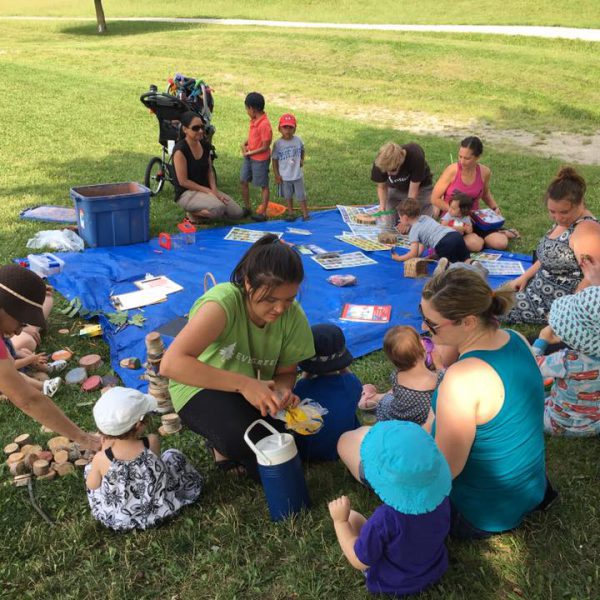 Park design events - programs, festivals and BBQs to gather input.
Park design events - programs, festivals and BBQs to gather input.
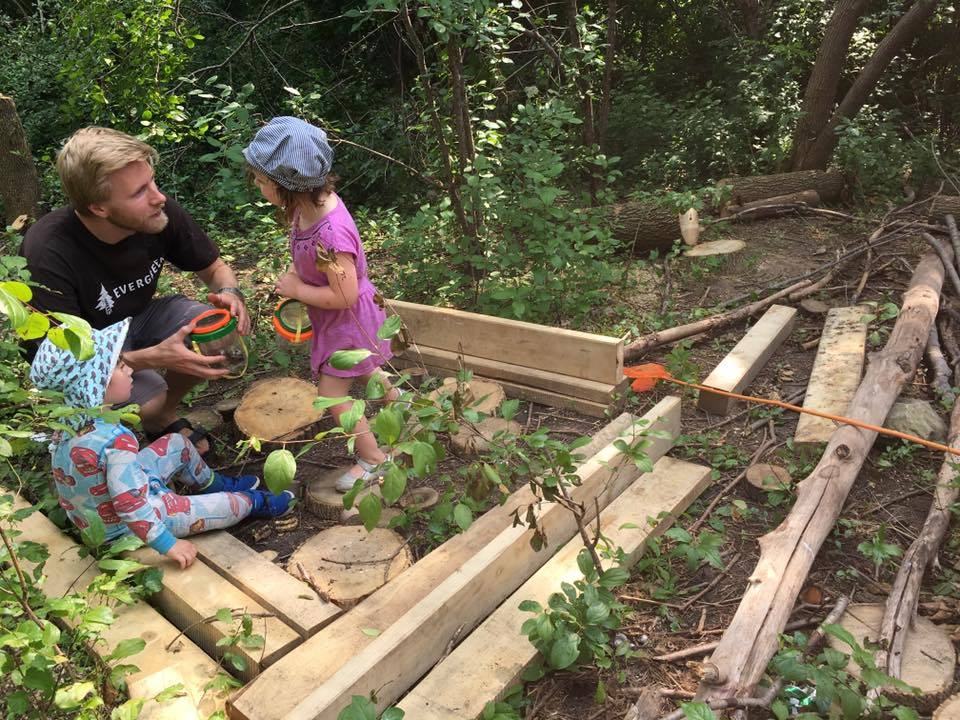
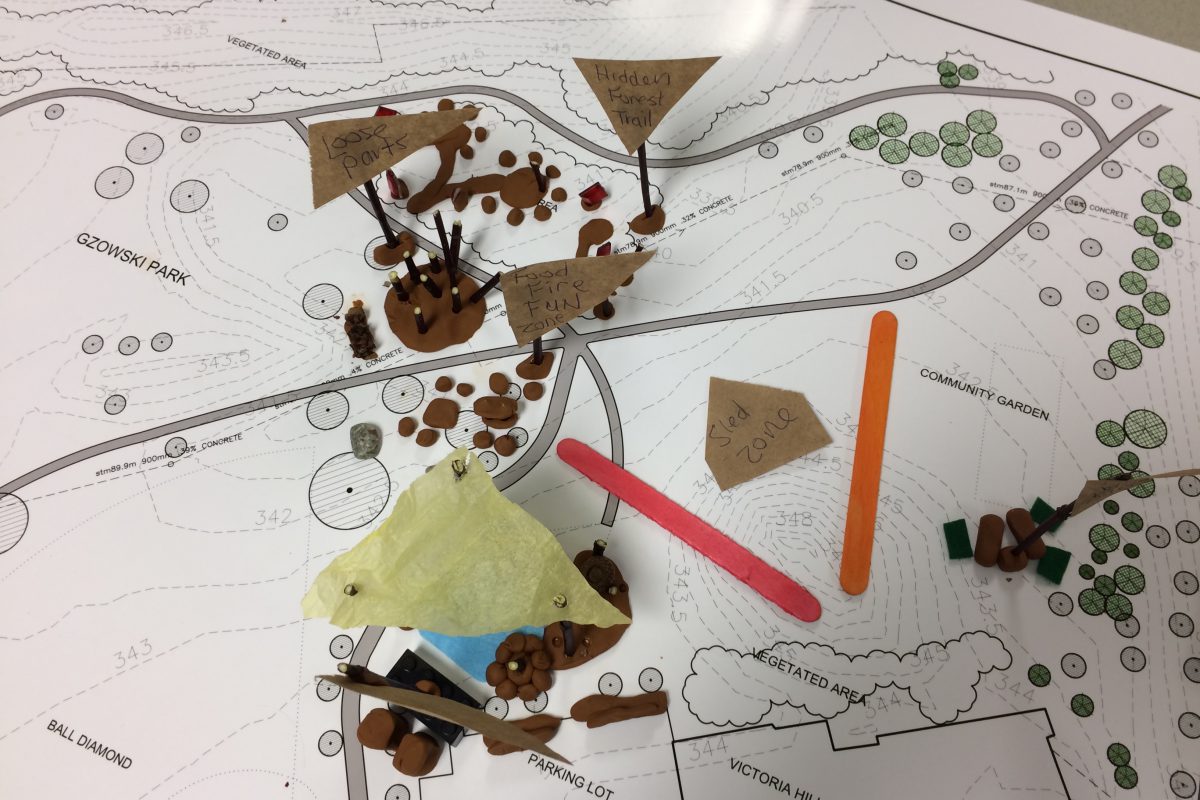
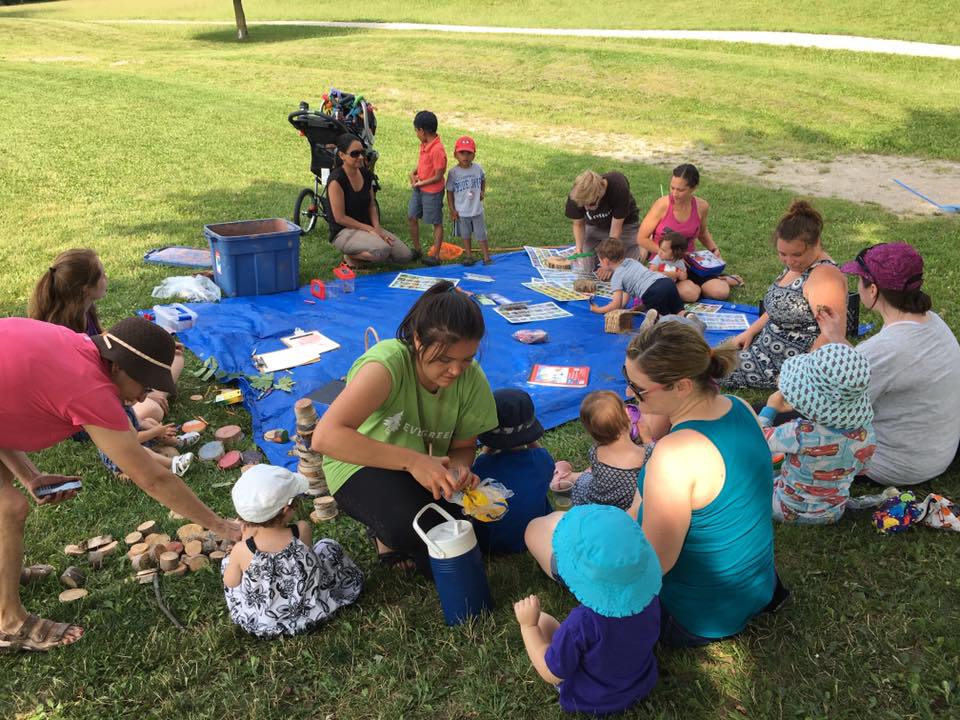 Park design events - programs, festivals and BBQs to gather input.
Park design events - programs, festivals and BBQs to gather input.
At Gzowski Park, children have been leading the co-design of a small mini-forest they call the ‘dead forest’. The neglected and sparsely forested landscape became an opportunity for the children to re-imagine the forest as their own – a place they could manipulate, change, and steward to meet their needs. The children worked with wooden planks, repurposed textiles, logs, stumps, tree limbs, and ropes to re-imagine the space. This free play and ‘loose parts’ approach transformed the place from forgotten to memorable. Children built forts and gathering areas, co-created mini-villages and began a narrative about their new forest home.
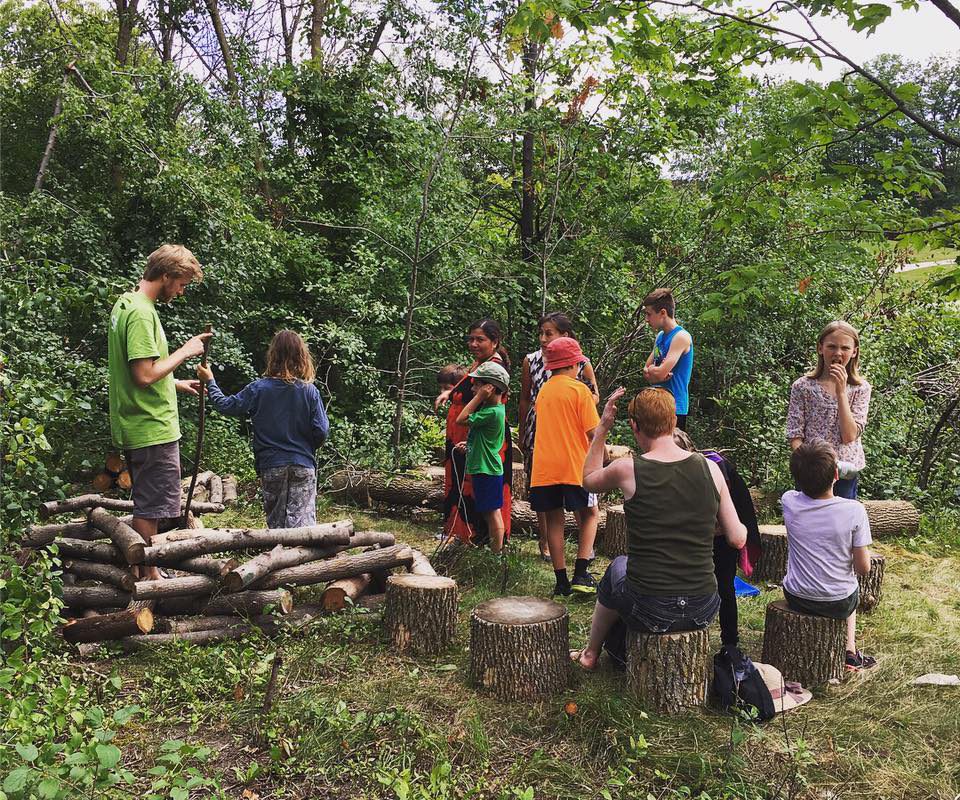 The dead forest and loose parts fort building.
The dead forest and loose parts fort building.
Nearby schools were engaged in placemaking activations in the parks and participated in a class-by-class visual preference exercise and a ‘dot-mocracy’ process. Students were encouraged to select their more desired features and discuss their preferences in class. Children reported that they’d never been asked for their input on what happens in their city and witnessed their ideas incorporated into the park concept designs. Over a thousand children participated in this ideation exercise.
Placemaking events geared towards children and their families were planned in the parks to collect the information required to advance the design planning. Feasts, nature-themed games, and outdoor design workshops were held where adults and children were invited to co-create their desired park space. Clay and natural materials were used to build models on the park maps. At each event, more than 150 participants were engaged. One participant shared that they’d never participated in a family event in the park that involved so many different age groups and that was geared toward park improvements.
Through a strategic locally-based partnership model, the Neighbourhood Nature Play program has made a significant impact in the lives of the children of Gzowski and Kingsdale parks. As a result, the City of Kitchener is altering its approach to park planning, development, and programming in favour of a more child-centred placemaking approach. The response from the communities has been overwhelmingly positive, leading the city to commit to systems improvements and program augmentations.
By working with the city of Kitchener to co-create better public spaces for children and their families, Evergreen hopes to improve children’s access to the planning, design, and development of public parks across the Kitchener Waterloo Region. Evergreen’s long-term goal is to invite cities across Canada to engage in this approach to child-friendly placemaking.
1. Connect – Engage children where they are – parks, community centres, schools, and listen deeply to what they are saying about their public spaces and reflect these perspectives in the programming and design of their city. Respect children as citizens, honour their right to participate and honestly engage them in every stage of the process. Empathise with a broad range of park users and build on the communities’ strengths, needs, hopes and dreams. Find ways to align with a city’s vision, strategic direction, and emerging public space policies.
2. Communicate – Build trust with city staff through consistent and meaningful contact. Engage diverse groups of people and provide information in a variety of languages. Be present in the community and cognizant of the ways in which children, their families, and caregivers connect to the community and receive information.
3. Iterate – Define co-design and develop trust through wise use of resources and prototyping of ideas to achieve quick wins. Create space for testing children’s ideas – be flexible, let the making of the place emerge out of community programming. Host festivals, BBQs, movie nights, and public meetings in the parks and provide food and childcare to help families participate in co-design exercises. Be sure to celebrate your successes by engaging with local newspapers, radio and social media.
This article belongs to a series of stories about the city at eye level for kids! You can access the full book online in PDF or pre-order your hardcopy to be delivered to your home.
Get your book here– Trimble, Stephen, Nabhan, Gary Paul. (1995) The Geography of Childhood: Why Children Need Wild Places, Beacon Press.
– Hart, Roger. (2008) ‘Creating Play Spaces By and For Children’, Project for Public Spaces, https://www.pps. org/article/righttoplay-2
– Mohammed Zakiul Islam, Robin Moore, Nilda Cosco. (2014)
‘Child-Friendly, Active, Healthy Neighborhoods: Physical Characteristics and Children’s Time Outdoors, Environment and Behaviour’, Volume: 48 issue: 5, page(s): 711-736
– Moore, R. & Young, D. (1978) Childhood Outdoors: Toward a Social Ecology of the Landscape, in Children and the Environment, Plenum Publishing Corporation.
– Wells, N. M. and Evans, G. W. (2003) ‘Nearby nature: a buffer of life stress among rural children’, Environment and Behavior, 35: 311-30.